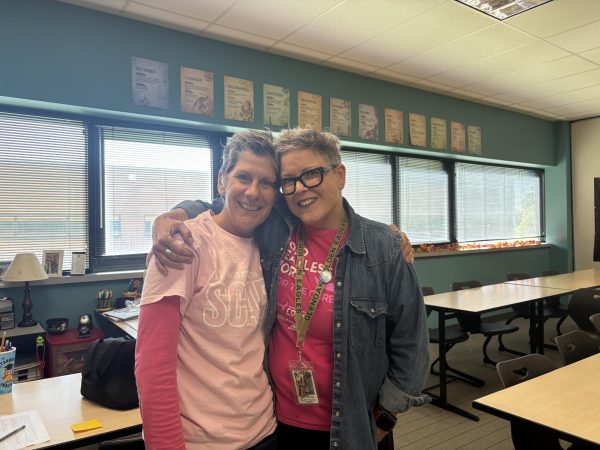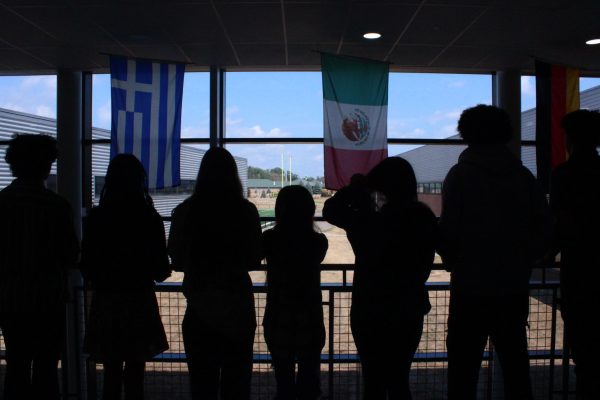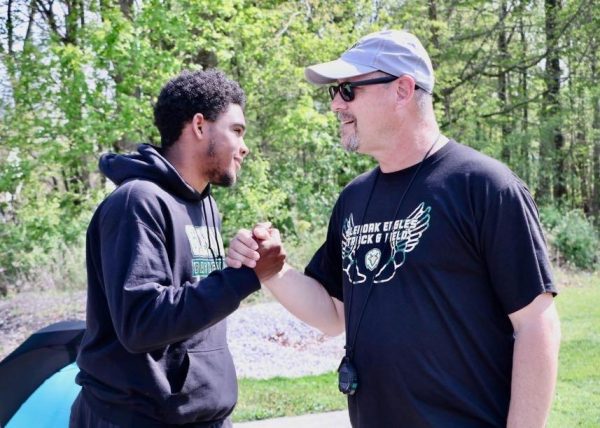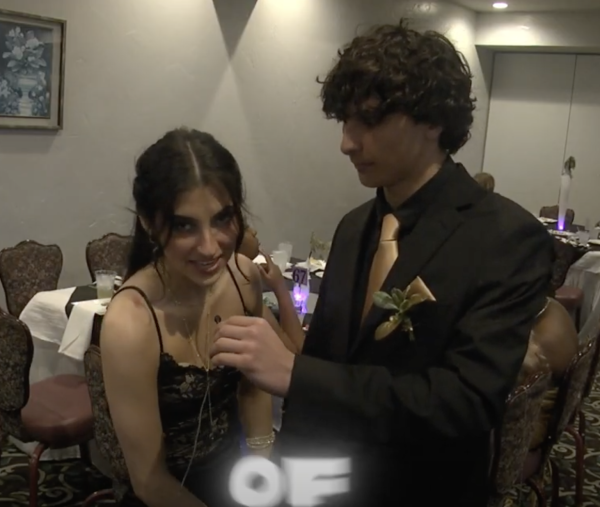History behind glass, attendants behind a mask
Museums have been finding creative solutions to the setbacks caused by COVID-19
The unique Bust Gallery at the Hall of Fame Museum . Each bust weighs at least 40 pounds and encaptures the facial features of all 354 Hall of Fame inductees.
Bronze statues line the walls, historical documents on display, fashion, art, and history coming alive. Museums, the homes of history, centers of culture and art, faced a new challenge. A pandemic.
Museums continue to thrive during the COVID-19 pandemic evolving to ensure the protection of visitors and artifacts alike.
The Pro Football Hall of Fame, one of the most iconic museums in Canton, was forced to postpone the 2020 Enshrinement and game. While also being understaffed the museum has continued to find solutions to their setbacks.
“Our digital and social media presence has increased greatly as more people have a tendency to consume football history at home,” Curator of the Pro Football Hall of Fame Museum, Jason Aikens said,. “The public is more hesitant to touch interactives in fear of becoming infected, but they have become more interested in our artifacts and traditional displays that require no touching.”
Alexandra Nicholis Coon is the Executive Director at the Massillon Museum. The Massillon Museum was hit hard, many of their staff were out sick with COVID.
“When our first employees were diagnosed with COVID in October 2020; we initiated, at that point, a staggered schedule, starting in November, and split our 16-person staff into two groups of eight, working alternate days onsite and remotely, rotating weekends,” Coon said. “We maintained that until May, which was a challenge; but all our cloud-based programs, remote work policy, staff professionalism, and board support enabled us to continue programming and fulfilling our mission.”
Zoom has become a combatant to COVID allowing people to communicate without risking infection. This solution has been implemented in a multitude of ways at the Hall of Fame.
When visiting the Hall of Fame you will hear a British accent on the other side of a tablet. One volunteer, Steve Flack, lives in England and is not allowed to travel, but continues to volunteer at the museum through video calls.
But Flack is not the only person communicating through technology.
“School groups can engage with Hall of Famers via Zoom from their own school or at the Hall. But because it is easier for them to make Zoom appearances we have been able to increase our programming. Our staff has learned to work from home when necessary.” Aikens said.
The Mckinley Presidential Library and Museum has also utilized technology to continue to reach visitors from their homes.
“In May 2020, we hired our first Digital Learning Specialist who has helped us transition our programs and events to digital platforms,” Kim Kenney, Executive Director at the McKinley Presidential Library and Museum said. “We have been able to reach beyond northeast Ohio through digital programming, so we intend to continue to offer virtual experiences in the future, even after the pandemic ends.”
A virtual experience, podcasts, have been used to keep the public informed on numerous topics for years. Museums have been using this program as well.
At the Hall of Fame Mission is co-hosted by Jamir Howerton, a former Cleveland Browns sideline reporter and New York Jets team reporter. The podcast interviews players, but not just that, it talks about the lessons and character development football teaches.
Similar to the Hall of Fame’s podcast Mission, Massillon started their own podcast MassMusing.
MassMusing interviews artists whose work is being displayed in the Studio M gallery. It offers a more in-depth exploration of their artwork, background, and inspiration.
The Massillon Museum has been making strides to return to pre-COVID days, while also keeping everyone safe.
“In 2020 both our children’s parties were virtual, with take-home part kits available for pickup before or after,” Coon said. “This year, we held both the Pumpkin Patch and Holiday Party onsite with COVID protocols in place.”
Since COVID museums have seen a significant drop in attendance. Federal programs have assisted both museums who were seeing a steep decline in income as less visitors arrived. The three biggest money-makers for museums: admissions, memberships and field trips. All three of which require in-person visits which were hindered due to the pandemic.
“In a normal year, we usually see approximately 50,000 visitors to our site. In 2020, we had 14,097 visitors, and in 2021 we had 21,997 visitors,” Kenney said. “We were starting to approach normal attendance levels in July 2021, but the emergence of the Delta variant dropped attendance sharply again. Our membership numbers have also dropped by half, and that is a significant portion of our income.”
The Hall of Fame’s drop in attendance was softened by Federal Payroll Protection and grants. Similarly Kenney from the McKinley Museum spent the last 22 months applying for funds. Both the Paycheck Protection Program and the Shuttered Venue Operations Grant assisted the museum to develop online programs and stay open.
But visiting museums has been listed as one of the safest indoor activities from The Berlin Institute of Technology.
Both the Hall of Fame, McKinley Museum, and Massillon Museum encourage visitors to come to the museums. The Hall of Fame still has the same hours of operation as before COVID.
The Keller Gallery at the McKinley Museum has many new exhibits on display including, Thrift Style, The “Me” Decade: A Look Back at the 1970s, Republic Stamping and Embalming, and more.
The Massillon Museum is always free, accessibility to programming is one of their main goals. Sensory-friendly options are available, a sensory room, braille labels, social stories on their website, and onsite wheelchair. Exhibits rotate frequently so every month there will be something new to see.
Museums have continued to make history during the pandemic, adjusting to ensure history is still contained and shared.
Your donation will support the student journalists of GlenOak High School. Your contribution will allow us to purchase equipment and cover our annual website hosting costs.
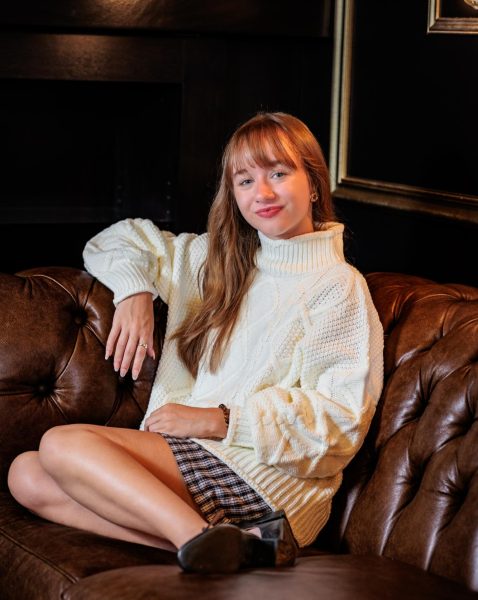
Rachel Gortney is a senior, she has been on staff for three years. She is also the speech and debate team President, involved in OMUN, and Academic Challenge...


